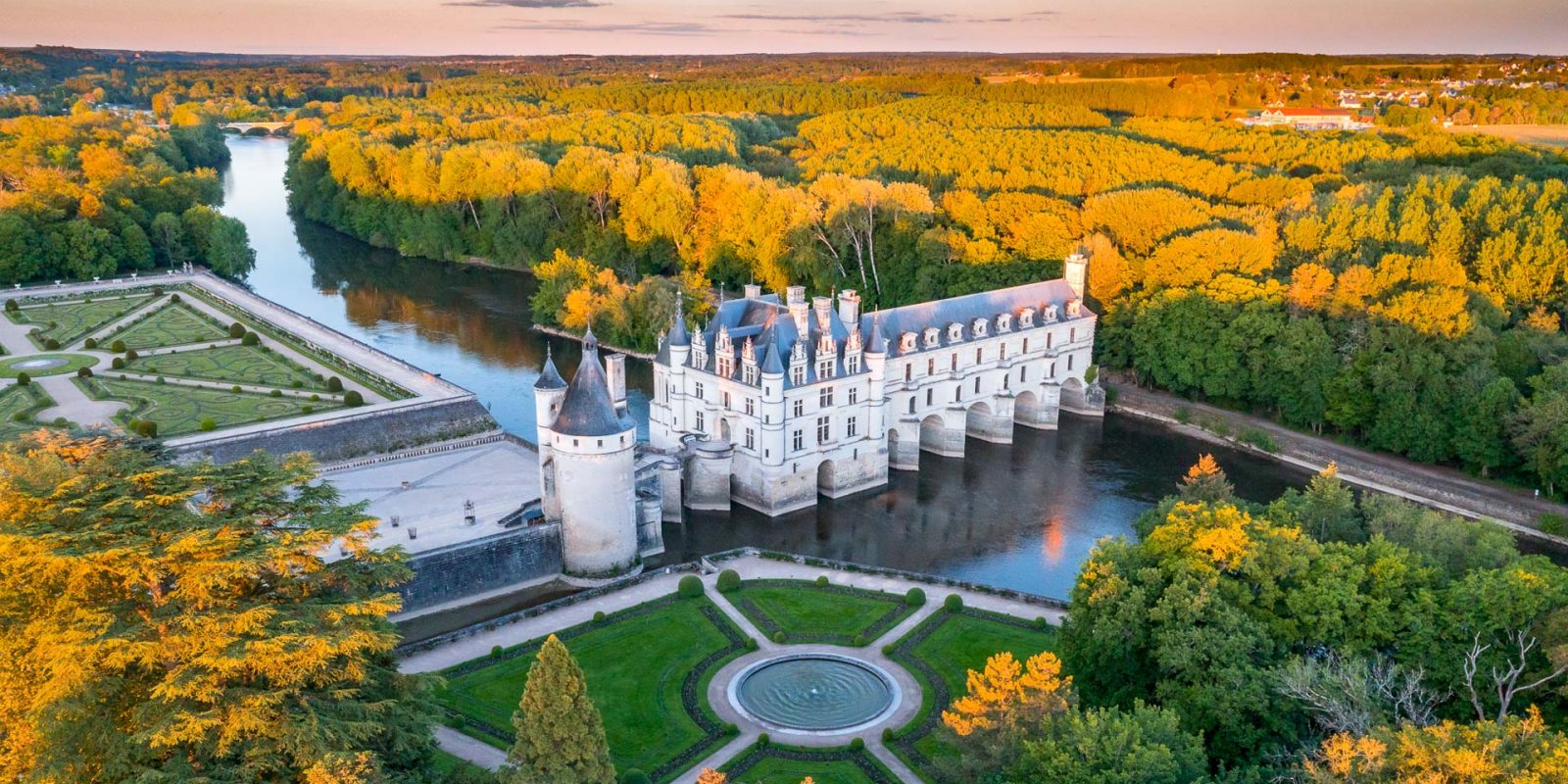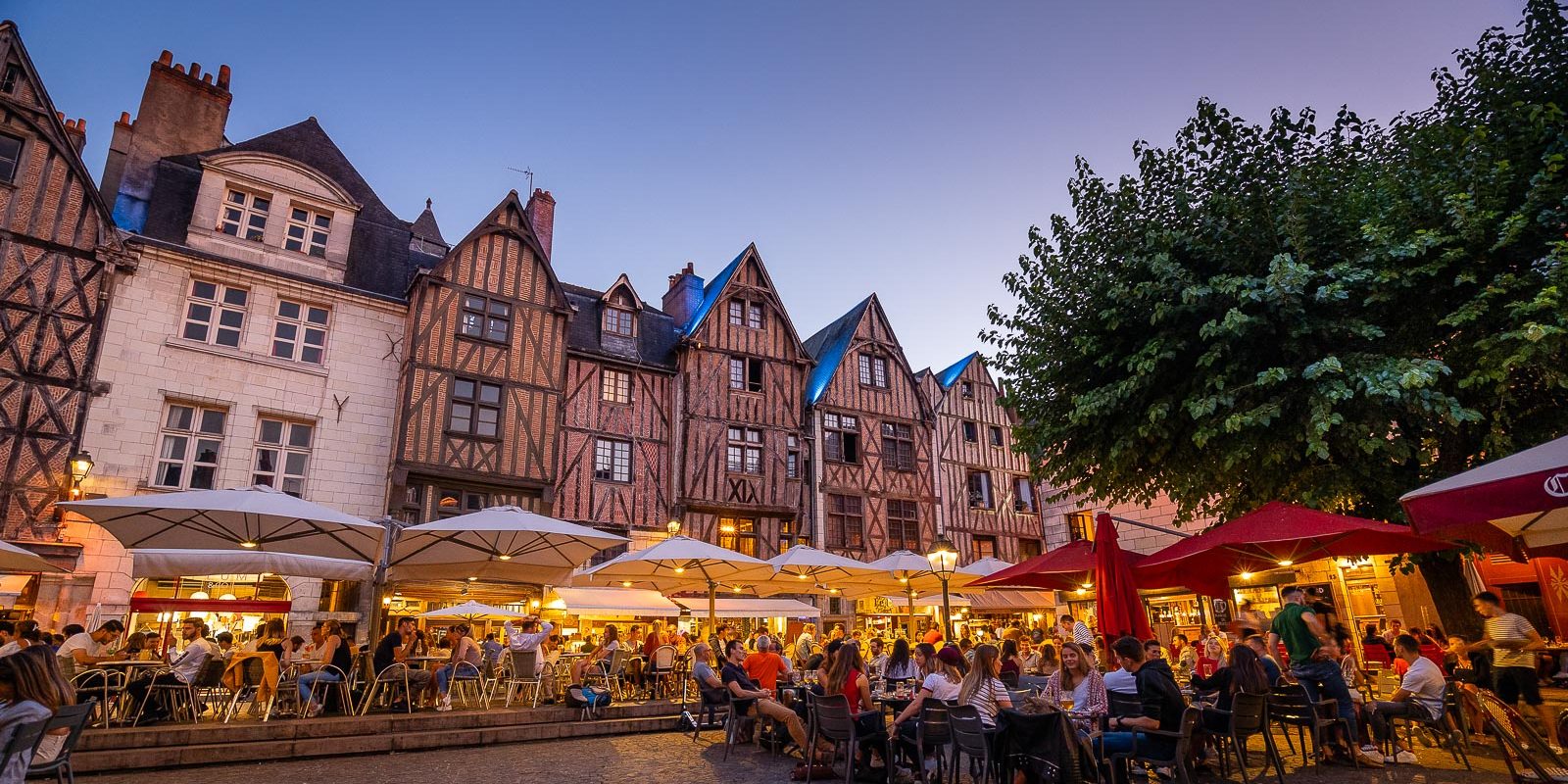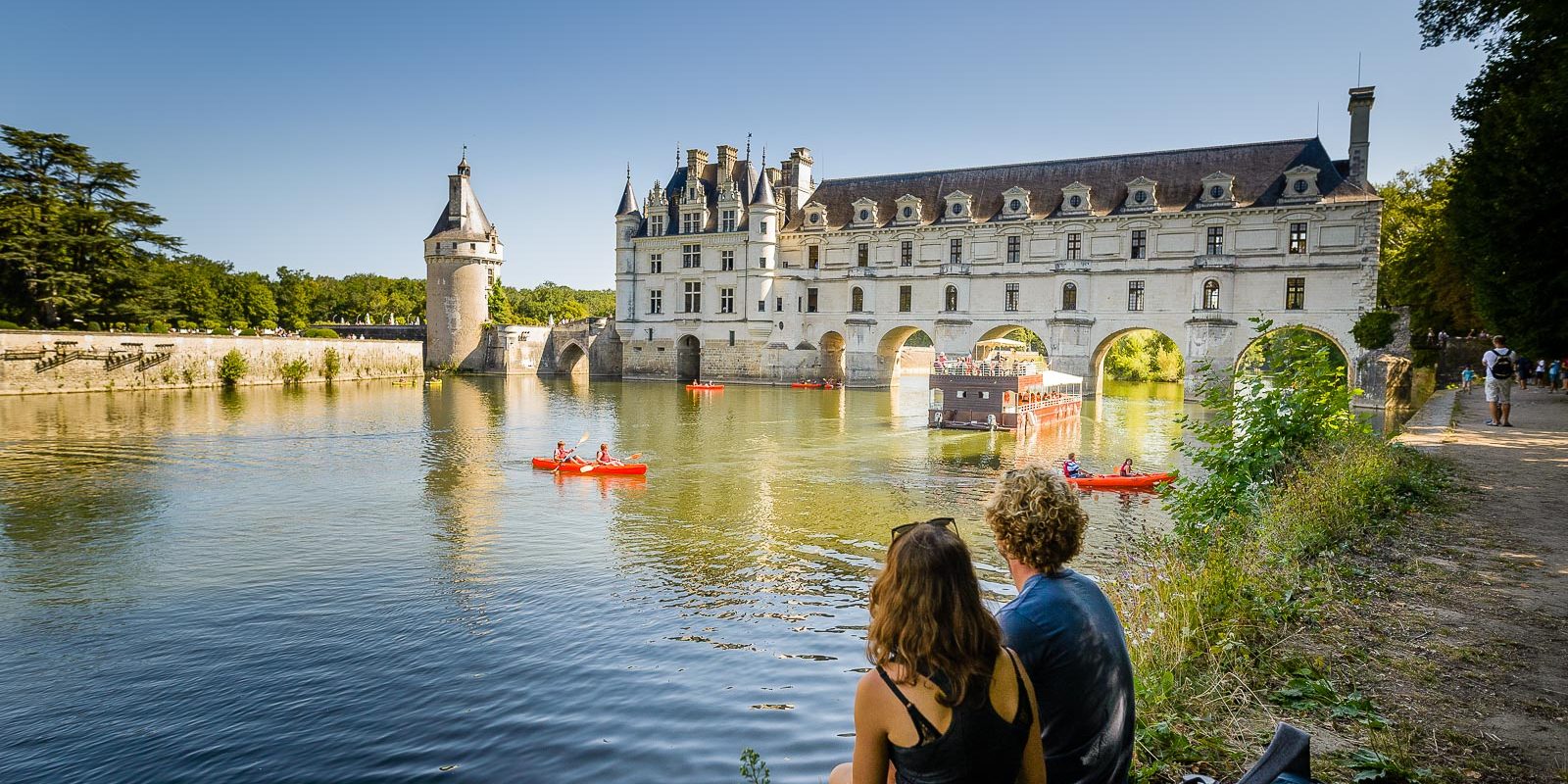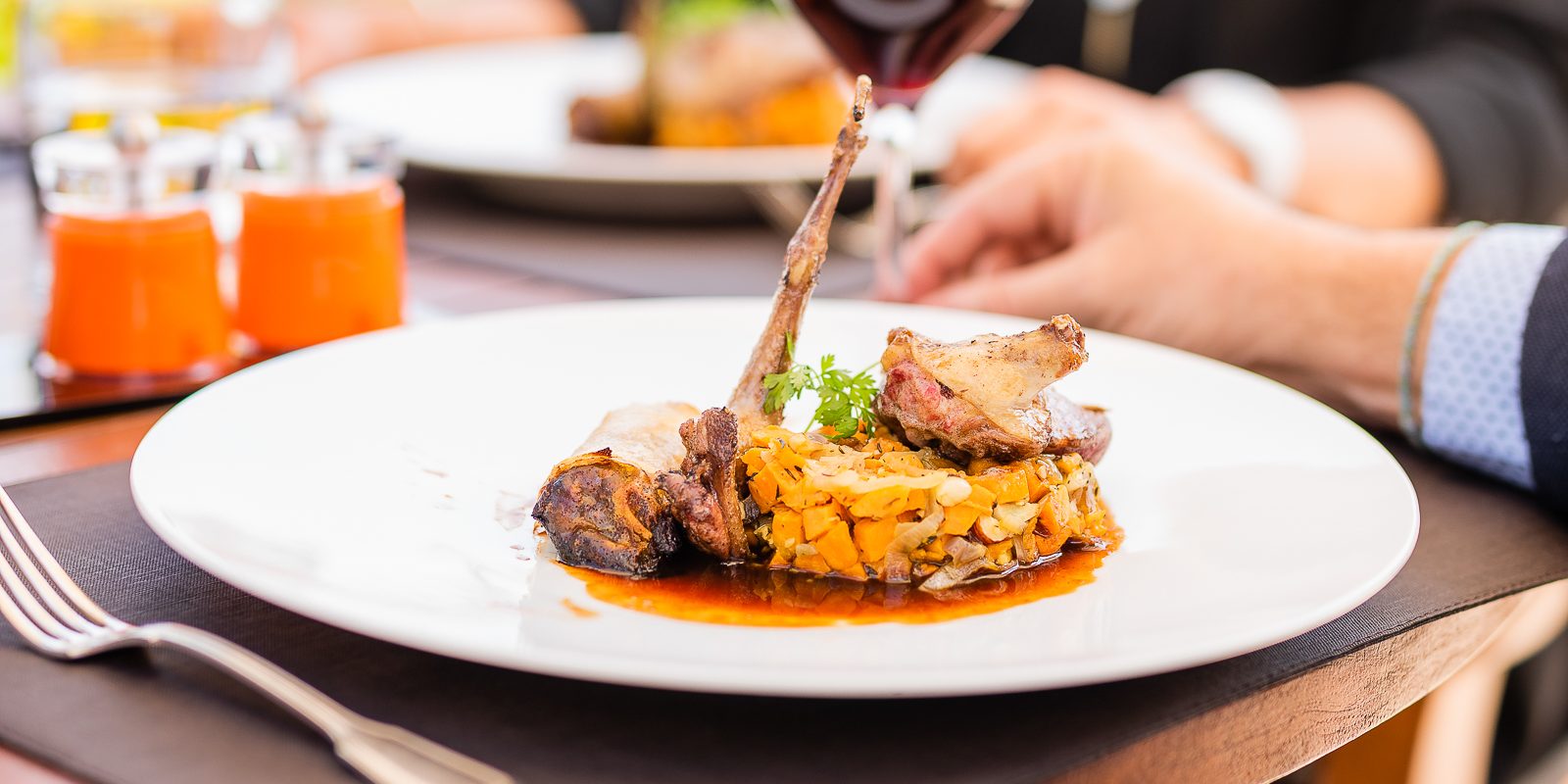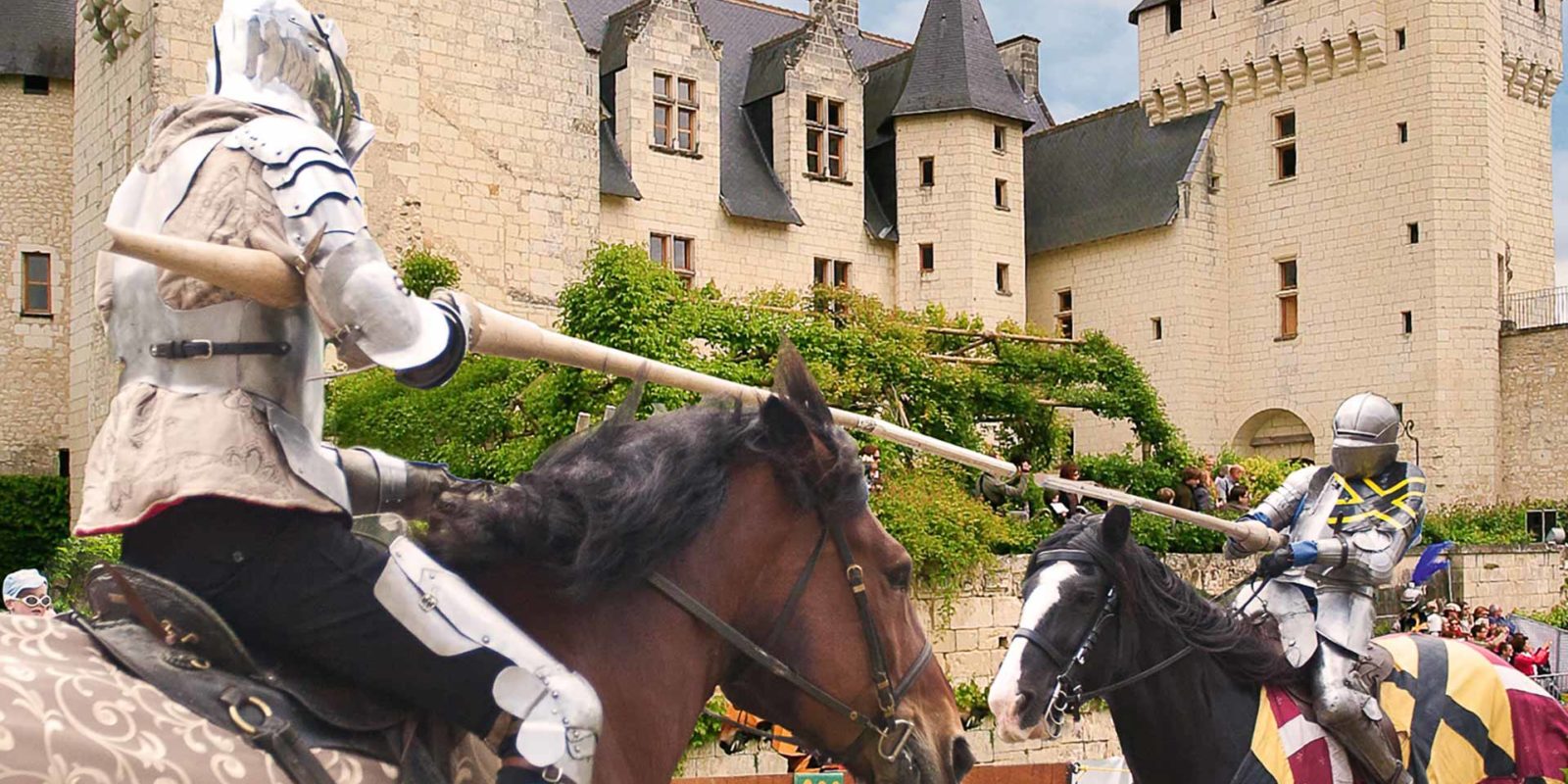First day
Stopover in Amboise! It is often said that Amboise is the most Italian of the Loire Valley cities. The large number of Italian visitors in summer is a festive confirmation of what the Renaissance, arriving in the region from Italy, began five centuries ago. You can enjoy the shopping streets and the promenades along the quays of the River Loire. For visits, don’t miss the Royal Château, Clos Lucé, the Domaine de Château Gaillard or the Chanteloup pagoda. Every Friday and Sunday morning, one of the region’s biggest markets is held in the city walls.
Château de Chenonceau. Its arches gracefully span the River Cher. Dear to Diane de Poitiers and Catherine de’ Medici, the beautifully furnished Château de Chenonceau is the most visited château in France after Versailles. Visitors are charmed by the gardens planted on each side of the keep… and by the delightful village, whose name is spelled with an “x”!
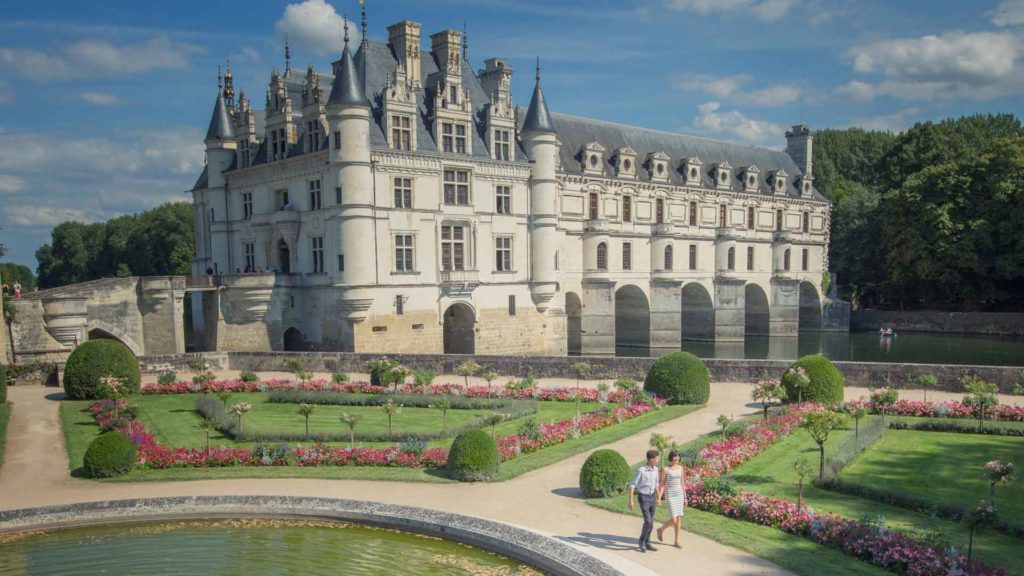
The Château de Chenonceau
Second day
Morning in Loches. The gateway to southern Touraine, the royal city of Loches is a perfect illustration of the architectural transition that progressively took place during the Renaissance. From its medieval past, the town has preserved its fortifications, its impressive keep (44 metres high) and the Saint-Ours collegiate church. From the Renaissance, Loches has inherited the Logis Royal and its finely-honed lines. The lower town is rich in charm, including the Town Hall and the Chancellery. On Wednesdays, the old town is also the scene of a very attractive market.
Along the way: the Indre Valley. To make your way to Tours from Loches, opt for the small D17 road running alongside the River Indre. The landscapes are well worth the detour and you can see the villages of Chédigny, Azay-sur-Indre and Reignac-sur-Indre.
Tours, capital of the Loire Valley. City of Art and History, the gateway to the Loire Valley, at the heart of an exceptional historic and cultural area – Tours is truly ideal for a short city break. This is a city with a discreet reputation and that you need to get to know, enjoying first-rate cultural heritage and galvanised by the energy of its students. Don’t miss the historic districts, the Fine Arts Museum, the cathedral and the basilica housing the tomb of Saint Martin, the Olivier Debré Centre of Contemporary Creation, the treasures of traditional craftsmanship. Take a break in the parks, explore the shopping streets and the aromas of the indoor and outdoor daily markets.

The roses of the village-garden of Chédigny
Third day
Visit to the gardens of Villandry. The purple of basil, the red of chili peppers, the blue of leeks… The exceptional beauty of the decorative vegetable garden is the unique feature of the gardens of Villandry, with a beautifully furnished and elegant 16th century château overlooking it. This famous plant mosaic was reconstituted in the early 20th century on the Renaissance model. Organic methods are now used. An ornamental garden, a water garden, a medicinal plant garden, a maze and a sun garden round off this unique and enchanting site.
Chinon! a name that wine-lovers associate with the memory of a great vintage, that for history-buffs evokes the names of Joan of Arc and Richard the Lionheart, and for fans of literature, the writings of François Rabelais. Chinon is all this – vineyards as far as the eye can see, and a royal fortress looking down on the town centre with its half-timbered houses and a thirst for life that is true to the spirit of Gargantua. Here again, the city is best visited on foot. You can bite into fouace bread, visit one of the city’s wine cellars or sit at a café terrace. In summer, the guinguette provides a view over the ramparts and the River Vienne.
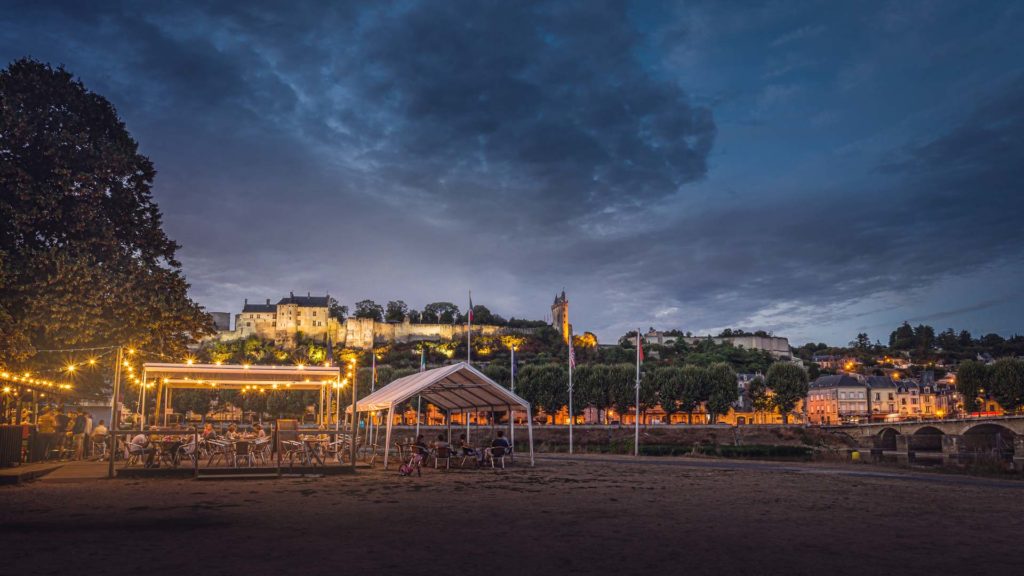
The guinguette of Chinon on the banks of the Vienne river

